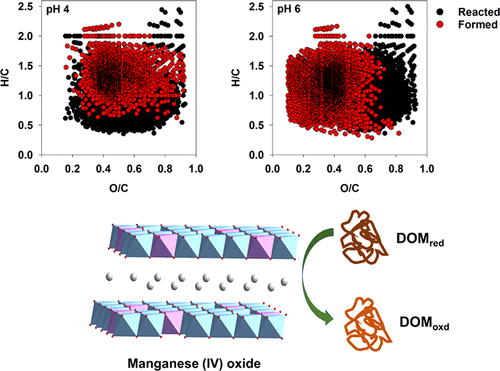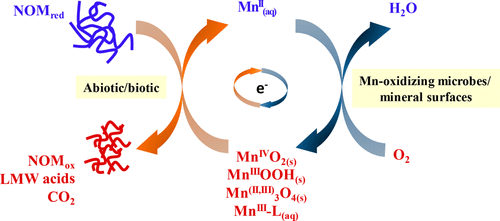Minieral-water interfacial processes, including adsorption, oxidation and precipitation, affect nurient (sulfate, phosphae and silicate) and trace element cycling (e.g., toxic metals) and availability and organic carbon stabilization in soils and sediments. To improve the fundamental understanding of the processes, we use synchrotron X-ray techniques (XANES/EXAFS spectroscopy and atomic pair distribution function analysis) and ultra-high resolution mass spectrometry (e.g., ESI-FT-ICR-MS), as well as surface complexation modeling and quantum chemical calculations, to aquire molecular-scale information. Our current focus in this line of research is on interactions between natural organic matter with mineral surfaces, including metal (Fe and Mn) oxides and phyllosilicates. The following figures show some of our recent work on adsorption and oxidation of dissolved organic matter and nutrients on Mn and Fe oxides.





